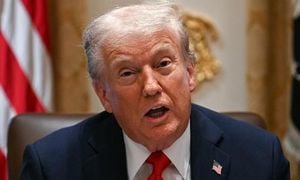It’s been a tumultuous year for Iran’s cryptocurrency market, with a cascade of crises shaking the very foundations of digital finance in the country. According to a recent report by blockchain analytics firm TRM Labs, Iranian crypto flows reached $3.7 billion between January and July 2025—an 11% decrease compared to the same period in 2024. The sharpest declines came in June and July, when a perfect storm of geopolitical tension, cyberattacks, and regulatory shifts sent shockwaves through Iran’s digital asset ecosystem.
The backdrop to this downturn is as dramatic as it gets. In June 2025, nuclear negotiations between Iran and Israel collapsed, igniting a 12-day conflict that began on June 13. The fighting was not confined to the battlefield—cyberwarfare played a starring role. According to TRM Labs, widespread power outages swept across Iran, caused by a combination of Israeli kinetic and cyber operations and regime-initiated shutdowns. These blackouts didn’t just plunge neighborhoods into darkness; they also disrupted the country’s ability to process crypto transactions and maintain digital infrastructure.
But the blows didn’t stop there. On June 18, as tensions between Iran and Israel peaked, pro-Israel hacking group Predatory Sparrow struck Iran’s largest crypto exchange, Nobitex. The cyberattack siphoned off a staggering $90 million in digital assets. Nobitex, which handles over 87% of Iran’s crypto transactions, suddenly found itself in crisis mode. Liquidity evaporated, transaction processing slowed to a crawl, and users—facing uncertainty and delays—scrambled to alternative platforms. TRM Labs reported that during the worst week following the hack, crypto outflows surged by more than 150%, with much of the volume routed to high-risk foreign exchanges that offered little to no Know Your Customer (KYC) checks.
For many Iranians, cryptocurrency has been a lifeline—a way to store value in the face of runaway inflation and to skirt the labyrinth of international sanctions that have all but severed Iran from the global economy. Stablecoins, especially Tether’s USDT on the TRON network, had become the digital dollar of choice. In 2025 alone, about $2 billion worth of Iranian crypto volume was transacted via TRON, mostly in USDT and TRX tokens, according to TRM Labs.
However, the stability offered by USDT was upended on July 2, when Tether issued its largest-ever freeze of Iranian-linked funds, blacklisting 42 crypto addresses with significant USDT balances. Many of these addresses were connected to Nobitex and wallets possibly tied to sanctioned entities. This action, as reported by TRM Labs, sent shockwaves through the Iranian crypto community. Exchanges, influencers, and even state-backed channels mounted a coordinated push to help users offload their TRON-based USDT balances and migrate funds into Dai (DAI) on the Polygon network—a move designed to preserve access to digital dollars and avoid the risk of future freezes.
The switch to DAI was not just a technical adjustment; it was a survival tactic. With the Iranian rial in freefall, digital assets remain one of the few ways for Iranians to hedge against inflation and move capital out of the country. Outgoing crypto flows remained relatively stable, even as inflows in June and July plummeted by over 50% and 76% respectively compared to the prior year, according to TRM Labs’ analysis.
Yet, these financial maneuvers are not just about personal survival or speculative trading. TRM Labs notes that Iran continues to use cryptocurrency to pay for sensitive goods from Chinese chip resellers, including hardware critical for artificial intelligence, drone components, and other electrical equipment. The report also highlights the use of crypto to fund espionage payments with foreign operatives—methods that allow the regime to bypass the reach of international sanctions and keep strategic projects moving.
Despite all the turmoil, illicit crypto transactions in Iran account for less than 1% of the total volume, according to TRM Labs. Most activity, it seems, is driven by everyday Iranians seeking stability and access to the wider world. Still, the hacks, blacklists, and regulatory uncertainties have exposed deep vulnerabilities in the country’s digital infrastructure.
Adding another layer of complexity, August 2025 saw the Iranian government enact a new law taxing capital gains on crypto trades. The legislation treats digital assets on par with real estate and gold, signaling a formal push to regulate what has long been a gray area in the Iranian economy. This move, as reported by TRM Labs, is seen by some as an attempt to bring the fast-growing crypto market under state control, while others worry it could stifle innovation and push activity further underground.
Meanwhile, a cottage industry of KYC shortcut services has sprung up within Iran, helping users dodge verification requirements on foreign exchanges. This workaround has allowed some Iranians to continue accessing global crypto markets, even as official channels have become increasingly restricted.
For all the upheaval, crypto remains a vital tool for many Iranians. It’s a hedge against inflation, a method for capital flight, and, for some, a ticket to the global economy. But the events of 2025 have made clear just how precarious this lifeline can be. Political instability, cyberattacks, and shifting regulatory sands have left the ecosystem vulnerable to both external shocks and internal mismanagement.
As TRM Labs puts it, “Recent events have exposed serious problems in the country’s digital infrastructure. Ongoing political and economic pressure continues to affect the sector.” The Iranian crypto market, once seen as a beacon of resilience in the face of adversity, now stands at a crossroads—caught between the promise of digital innovation and the harsh realities of geopolitics.
Looking ahead, the future of crypto in Iran remains uncertain. With sanctions tightening, conflicts simmering, and technology evolving at breakneck speed, the only constant appears to be change itself. For the millions of Iranians who rely on digital assets to weather economic storms, the coming months will be a test of both endurance and adaptability.



